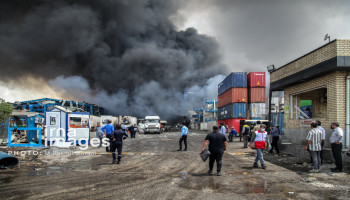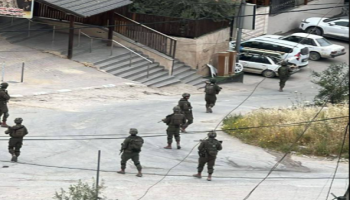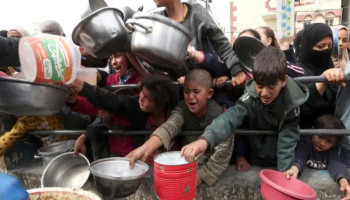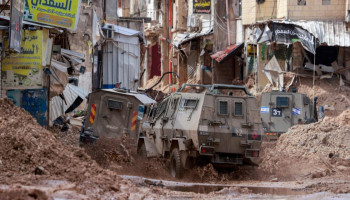The administration of US President Joe Biden has started deploying new troops to Eastern Europe even after it said Washington was no longer calling what it deems a potential Russian invasion of Ukraine “imminent.”
The US military's European Command announced in a statement on Friday that the first group of American troops, tasked with reinforcing NATO allies amid an alleged Russian military build-up on Ukraine’s border, has arrived in Germany.
"Soldiers from the 18th Airborne Corps arrived in Wiesbaden today," a spokesperson for the command said in reference to the city in the western German state of Hesse, adding that they would establish a headquarters in Germany to support 1,700 paratroopers meant to deploy to Poland.
"These are the first of 2,000 soldiers to arrive in Europe following the Pentagon's announcement of additional forces moving from the United States to Europe in support of our NATO allies," the statement said.
Biden ordered on Wednesday nearly 3,000 extra troops to Poland and Romania to shield Eastern Europe amid an escalation of tensions between Russia and the West over Ukraine.
According to the Pentagon, a Stryker squadron of around 1,000 US service members based in the German town of Vilseck will be sent to Romania, while around 1,700 service members, mainly from the 82nd Airborne Division, will deploy from Fort Bragg, North Carolina, to Poland.
The troops’ deployment came as the US administration said it was no longer using the word “imminent” to describe a potential Russian invasion of Ukraine, backing away from an assessment US officials had repeatedly voiced in recent days.
At a press briefing on Wednesday, White House Press Secretary Jen Psaki announced the decision and said the use of "imminent" was sending out a message US officials were not intending to send.
The decision to discontinue the use of "imminent" came after the description drew anger in Kiev last week, with Ukrainian President Volodymyr Zelenskyy indicating frustration with the term. On January 29, Zelenskyy criticized the Western states for stirring up panic by warnings of an imminent Russian invasion, saying the panic-triggering alerts are placing a heavy burden on the country's economy.
He called on the West to avoid creating "panic" in the face of the Russian troop buildup on Ukraine's border, stressing, "We don't need this panic."
Russia and the US-led NATO have recently been at odds over Ukraine. Western countries accuse Russia of preparing for an invasion of Ukraine by amassing 100,000 troops and armaments near the border with that country. Rejecting the allegation, Moscow says the troop build-up is defensive as NATO has increased its activity near Russian borders.
In December last year, Moscow asked the Western military alliance to deny Ukrainian membership and roll back its military deployments near Russia, demanding legally binding guarantees. The US and NATO both offered written responses to the Russian requests, and Moscow later said its key demands had been ignored.
Russian President Vladimir Putin has already warned that the US is deliberately designing a scenario to lure Russia into a war over Ukraine.
The Kremlin has repeatedly reiterated that the expansion of the NATO military infrastructure in Ukraine constitutes a red line for Moscow and that any future expansion must exclude Ukraine and other former Soviet countries.
The US, Britain and the European Union (EU) have already threatened to impose a range of harsh financial and economic sanctions on Russia in case of launching a major attack on Ukraine.
Source: Press TV







